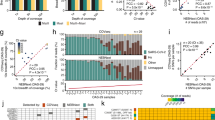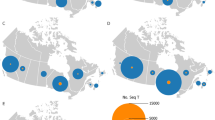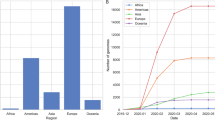Abstract
One of the main challenges in the fight against coronavirus disease 2019 (COVID-19) stems from the ongoing evolution of severe acute respiratory syndrome coronavirus 2 (SARS-CoV-2) into multiple variants. To address this hurdle, research groups around the world have independently developed protocols to isolate these variants from clinical samples. These isolates are then used in translational and basic research—for example, in vaccine development, drug screening or characterizing SARS-CoV-2 biology and pathogenesis. However, over the course of the COVID-19 pandemic, we have learned that the introduction of artefacts during both in vitro isolation and subsequent propagation to virus stocks can lessen the validity and reproducibility of data. We propose a rigorous pipeline for the generation of high-quality SARS-CoV-2 variant clonal isolates that minimizes the acquisition of mutations and introduces stringent controls to detect them. Overall, the process includes eight stages: (i) cell maintenance, (ii) isolation of SARS-CoV-2 from clinical specimens, (iii) determination of infectious virus titers by plaque assay, (iv) clonal isolation by plaque purification, (v) whole-virus-genome deep-sequencing, (vi and vii) amplification of selected virus clones to master and working stocks and (viii) sucrose purification. This comprehensive protocol will enable researchers to generate reliable SARS-CoV-2 variant inoculates for in vitro and in vivo experimentation and will facilitate comparisons and collaborative work. Quality-controlled working stocks for most applications can be generated from acquired biorepository virus within 1 month. An additional 5–8 d are required when virus is isolated from clinical swab material, and another 6–7 d is needed for sucrose-purifying the stocks.
Key points
-
This protocol describes a method for generating single-clone viral stocks of severe acute respiratory syndrome coronavirus 2 from patient samples or from biorepositories.
-
The protocol improves on previous methods by introducing a number of stringent measures to prevent the introduction of artefacts during viral propagation.
This is a preview of subscription content, access via your institution
Access options
Access Nature and 54 other Nature Portfolio journals
Get Nature+, our best-value online-access subscription
$29.99 / 30 days
cancel any time
Subscribe to this journal
Receive 12 print issues and online access
$259.00 per year
only $21.58 per issue
Buy this article
- Purchase on Springer Link
- Instant access to full article PDF
Prices may be subject to local taxes which are calculated during checkout








Similar content being viewed by others
Data availability
Source data are provided with this paper. Sequences for viruses used in this study are available at SARS-CoV-2 USA-WA1/2020, GISAID, EPI_ISL_404895.2; SARS-CoV-2 hCoV-19/England/204820464/2020, GISAID, EPI_ISL_683466; SARS-CoV-2 hCoV-19/South Africa/KRISP-K005325/2020, GISAID, EPI_ISL_678615; SARS-CoV-2 hCoV-19/Japan/TY7-503/2021, GISAID, EPI_ISL_877769; SARS-CoV-2 hCoV-19/USA/PHC658/2021, GenBank accession no. OL442162; SARS-CoV-2 hCoV-19/USA/CA-Stanford-106_S04/2022, GISAID, EPI_ISL_15196219; and SARS-CoV-2 USA/NYU-VC-003/2020, GenBank accession no. MT703677. Source data are provided with this paper.
References
World Health Organization. WHO Coronavirus (COVID-19) Dashboard. Available at https://covid19.who.int/ (2023).
de Vries, M. et al. A comparative analysis of SARS-CoV-2 antivirals characterizes 3CLpro inhibitor PF-00835231 as a potential new treatment for COVID-19. J. Virol. 95, e01819-20 (2021).
FDA. Emergency Use Authorization (Eua) of Paxlovid for Coronavirus Disease 2019 (Covid-19). Available at https://www.fda.gov/media/155051/download (2023).
Samanovic, M. I. et al. Robust immune responses are observed after one dose of BNT162b2 mRNA vaccine dose in SARS-CoV-2-experienced individuals. Sci. Transl. Med. 14, eabi8961 (2022).
Samanovic, M. I. et al. Vaccine-acquired SARS-CoV-2 immunity versus infection-acquired immunity: a comparison of three COVID-19 vaccines. Vaccines (Basel) 10, 2152 (2022).
Kister, I. et al. Hybrid and vaccine-induced immunity against SAR-CoV-2 in MS patients on different disease-modifying therapies. Ann. Clin. Transl. Neurol. 9, 1643–1659 (2022).
Kister, I. et al. Cellular and humoral immunity to SARS-CoV-2 infection in multiple sclerosis patients on ocrelizumab and other disease-modifying therapies: a multi-ethnic observational study. Ann. Neurol. 91, 782–795 (2022).
Izmirly, P. M. et al. Evaluation of immune response and disease status in systemic lupus erythematosus patients following SARS–CoV-2 vaccination. Arthritis Rheumatol. 74, 284–294 (2022).
Ching, K. L. et al. ACE2-containing defensosomes serve as decoys to inhibit SARS-CoV-2 infection. PLoS Biol. 20, 1–25 (2022).
Rona, G. et al. The NSP14/NSP10 RNA repair complex as a Pan-coronavirus therapeutic target. Cell Death Differ. 29, 285–292 (2022).
Rodriguez-Rodriguez, B. A. et al. A neonatal mouse model characterizes transmissibility of SARS-CoV-2 variants and reveals a role for ORF8. Nat. Commun. 14, 3026 (2023).
Lokugamage, K. G. et al. Type I interferon susceptibility distinguishes SARS-CoV-2 from SARS-CoV. J. Virol. 94, e01410-20 (2020).
Yount, B. et al. Reverse genetics with a full-length infectious cDNA of severe acute respiratory syndrome coronavirus. Proc. Natl. Acad. Sci. USA 100, 12995–13000 (2003).
Drosten, C. et al. Identification of a novel coronavirus in patients with severe acute respiratory syndrome. N. Engl. J. Med. 348, 1967–1976 (2003).
Scobey, T. et al. Reverse genetics with a full-length infectious cDNA of the Middle East respiratory syndrome coronavirus. Proc. Natl. Acad. Sci. USA 110, 16157–16162 (2013).
Coleman, C. M. & Frieman, M. B. Growth and quantification of MERS-CoV infection. Curr. Protoc. Microbiol. 2015, 15E.2.1–15E.2.9 (2015).
Sun, F. et al. SARS-CoV-2 quasispecies provides an advantage mutation pool for the epidemic variants. Microbiol. Spectr. 9, e0026121 (2021).
Bal, A. et al. Detection and prevalence of SARS-CoV-2 co-infections during the Omicron variant circulation in France. Nat. Commun. 13, 6316 (2022).
Russell, C. D. et al. Co-infections, secondary infections, and antimicrobial use in patients hospitalised with COVID-19 during the first pandemic wave from the ISARIC WHO CCP-UK study: a multicentre, prospective cohort study. Lancet Microbe 2, e354–e365 (2021).
Singh, V., Upadhyay, P., Reddy, J. & Granger, J. SARS-CoV-2 respiratory co-infections: incidence of viral and bacterial co-pathogens. Int. J. Infect. Dis. 105, 617–620 (2021).
Swets, M. C. et al. SARS-CoV-2 co-infection with influenza viruses, respiratory syncytial virus, or adenoviruses. Lancet 399, 1463–1464 (2022).
Örd, M., Faustova, I. & Loog, M. The sequence at SpikeS1/S2 site enables cleavage by furin and phospho-regulation in SARS-CoV2 butnot in SARS-CoV1 or MERS-CoV. Sci. Rep. 10, (2020).
Jackson, C.B., Farzan, M., Chen, B. & Choe, H. Mechanisms of SARS-CoV-2 entry intocells. Nat. Rev. Mol. Cell Biol. 23, (2022).
Meng, B. et al. Altered TMPRSS2 usage by SARS-CoV-2Omicron impacts infectivity and fusogenicity. Nature 603, 706–714 (2022).
Koch, J. et al. TMPRSS2 expression dictates the entry route used by SARS‐CoV‐2 to infect host cells. EMBO J. 40, e107821 (2021).
Takeda, M. Proteolytic activation of SARS-CoV-2 spike protein. Microbiol. Immunol. 66, 15–23 (2022).
Klimstra, W. B. et al. SARS-CoV-2 growth, furin-cleavage-site adaptation and neutralization using serum from acutely infected hospitalized COVID-19 patients. J. Gen. Virol. 101, 1156–1169 (2020).
Vu, M. N. et al. QTQTN motif upstream of the furin-cleavage site plays a key role in SARS-CoV-2 infection and pathogenesis. Proc. Natl. Acad. Sci. USA 119, 1–7 (2022).
Funnell, S. G. P. et al. A cautionary perspective regarding the isolation and serial propagation of SARS-CoV-2 in Vero cells. NPJ Vaccines 6, 83 (2021).
Johnson, B. A. et al. Loss of furin cleavage site attenuates SARS-CoV-2 pathogenesis. Nature 591, 293–299 (2021).
Chen, Y. et al. Genetic mutation of SARS-CoV-2 during consecutive passages in permissive cells. Virol. Sin. 36, 1073–1076 (2021).
Chung, H., Noh, J. Y., Koo, B. S., Hong, J. J. & Kim, H. K. SARS-CoV-2 mutations acquired during serial passage in human cell lines are consistent with several of those found in recent natural SARS-CoV-2 variants. Comput. Struct. Biotechnol. J. 20, 1925–1934 (2022).
Duerr, R. et al. Delta-Omicron recombinant escapes therapeutic antibody neutralization. iScience 26, 106075 (2023).
Sonnleitner, S. T. et al. The mutational dynamics of the SARS-CoV-2 virus in serial passages in vitro. Virol. Sin. 37, 198–207 (2022).
Matsuyama, S. et al. Enhanced isolation of SARS-CoV-2 by TMPRSS2-expressing cells. Proc. Natl. Acad. Sci. USA 117, 7001–7003 (2020).
Sasaki, M. et al. SARS-CoV-2 variants with mutations at the S1/S2 cleavage site are generated in vitro during propagation in TMPRSS2-deficient cells. PLoS Pathog. 17, e1009233 (2021).
Kalamvoki, M. & Norris, V. A defective viral particle approach to COVID-19. Cells 11, 302 (2022).
Girgis, S. et al. Evolution of naturally arising SARS-CoV-2 defective interfering particles. Commun. Biol. 5, 1–12 (2022).
Mautner, L. et al. Replication kinetics and infectivity of SARS-CoV-2 variants of concern in common cell culture models. Virol. J. 19, 1–11 (2022).
Mlcochova, P. et al. SARS-CoV-2 B.1.617.2 Delta variant replication and immune evasion. Nature 599, 114–119 (2021).
Willett, B. J. et al. SARS-CoV-2 Omicron is an immune escape variant with an altered cell entry pathway. Nat. Microbiol. 7, 1161–1179 (2022).
McGrath, M. E. et al. SARS-CoV-2 variant spike and accessory gene mutations alter pathogenesis. Proc. Natl. Acad. Sci. USA 119, e2204717119 (2022).
Iwata-Yoshikawa, N. et al. Essential role of TMPRSS2 in SARS-CoV-2 infection in murine airways. Nat. Commun. 13, 6100 (2022).
Plavec, Z. et al. SARS-CoV-2 production, purification methods and UV inactivation for proteomics and structural studies. Viruses 14, 4–15 (2022).
Bernard-Raichon, L. et al. Gut microbiome dysbiosis in antibiotic-treated COVID-19 patients is associated with microbial translocation and bacteremia. Nat. Commun. 13, 5926 (2022).
Samanovic, M. I. et al. Robust immune responses areobserved after one dose of BNT162b2 mRNA vaccine dose in SARS-CoV-2 experiencedindividuals. 14, 1–31 (2022).
Case, J. B., Bailey, A. L., Kim, A. S., Chen, R. E. & Diamond, M. S. Growth, detection, quantification, and inactivation of SARS-CoV-2. Virology 548, 39–48 (2020).
Xie, X. et al. Engineering SARS-CoV-2 using a reverse genetic system. Nat. Protoc. 16, 1761–1784 (2021).
Chaudhry, M. Z. et al. Rapid SARS-CoV-2 adaptation to available cellular proteases. J. Virol. 96, e0218621 (2022).
Baczenas, J. J. et al. Propagation of SARS-CoV-2 in Calu-3 cells to eliminate mutations in the furin cleavage site of spike. Viruses 13, 2434 (2021).
Yamada, S. et al. Assessment of SARS-CoV-2 infectivity of upper respiratory specimens from COVID-19 patients by virus isolation using VeroE6/TMPRSS2 cells. BMJ Open Respir. Res. 8, e000830 (2021).
Duerr, R. et al. Dominance of Alpha and Iota variants in SARS-CoV-2 vaccine breakthrough infections in New York City. J. Clin. Invest. 131, e152702 (2021).
McAuley, J. et al. Optimal preparation of SARS-CoV-2 viral transport medium for culture. Virol. J. 18, 53 (2021).
Rosenthal, S. H. et al. Development and validation of a high throughput SARS-CoV-2 whole-genome sequencing workflow in a clinical laboratory. Sci. Rep. 12, 2054 (2022).
Laporte, M. et al. The SARS-CoV-2 and other human coronavirus spike proteins are fine-tuned towards temperature and proteases of the human airways. PLoS Pathog. 17, e1009500 (2021).
Peacock, T. P. et al. The altered entry pathway and antigenic distance of the SARS-CoV-2 Omicron variant map to separate domains of spike protein. Preprint at https://www.biorxiv.org/content/10.1101/2021.12.31.474653v2 (2022).
Rottem, S., Kosower, N. S. & Kornspan, J. D. Contamination of tissue cultures by mycoplasmas. In Biomedical Tissue Culture (eds. Ceccherini-Nelli, L. & Matteoli, B.) (IntechOpen, 2012).
Watanabe, I. & Okada, S. Effects of temperature on growth rate of cultured mammalian cells (L5178Y). J. Cell Biol. 32, 309–323 (1967).
Clements, G. B. Selection of biochemically variant, in some cases mutant, mammalian cells in culture. Adv. Cancer Res. 21, 273–390 (1975).
Stacey, G. N. & Masters, J. R. Cryopreservation and banking of mammalian cell lines. Nat. Protoc. 3, 1981–1989 (2008).
La Scola, B. et al. Viral RNA load as determined by cell culture as a management tool for discharge of SARS-CoV-2 patients from infectious disease wards. Eur. J. Clin. Microbiol. Infect. Dis. 39, 1059–1061 (2020).
Francis, R. et al. High-speed large-scale automated isolation of SARS-CoV-2 from clinical samples using miniaturized co-culture coupled to high-content screening. Clin. Microbiol. Infect. 27, 128.e1–128.e7 (2021).
Sonnleitner, S. T. et al. An in vitro model for assessment of SARS-CoV-2 infectivity by defining the correlation between virus isolation and quantitative PCR value: isolation success of SARS-CoV-2 from oropharyngeal swabs correlates negatively with Cq value. Virol. J. 18, 71 (2021).
Sung, A. et al. Isolation of SARS-CoV-2 in viral cell culture in immunocompromised patients with persistently positive RT-PCR results. Front. Cell. Infect. Microbiol. 12, 804175 (2022).
Rhoads, D. et al. College of American Pathologists (CAP) Microbiology Committee perspective: caution must be used in interpreting the cycle threshold (Ct) value. Clin. Infect. Dis. 72, e685–e686 (2021).
Potter, R. F. et al. Evaluation of PCR cycle threshold values by patient population with the quidel lyra SARS-CoV-2 assay. Diagn. Microbiol. Infect. Dis. 101, 115387 (2021).
Arora, D. J. S., Tremblay, P., Bourgault, R. & Boileau, S. Concentration and purification of influenza virus from allantoic fluid. Anal. Biochem. 144, 189–192 (1985).
Mbiguino, A. & Menezes, J. Purification of human respiratory syncytial virus: superiority of sucrose gradient over percoll, renografin, and metrizamide gradients. J. Virol. Methods 31, 161–170 (1991).
Putnak, R. et al. Development of a purified, inactivated, dengue-2 virus vaccine prototype in Vero cells: immunogenicity and protection in mice and rhesus monkeys. J. Infect. Dis. 174, 1176–1184 (1996).
Ali, A. & Roossinck, M. J. Rapid and efficient purification of Cowpea chlorotic mottle virus by sucrose cushion ultracentrifugation. J. Virol. Methods 141, 84–86 (2007).
Hankaniemi, M. M. et al. Optimized production and purification of Coxsackievirus B1 vaccine and its preclinical evaluation in a mouse model. Vaccine 35, 3718–3725 (2017).
Leibowitz, J., Kaufman, G. & Liu, P. Coronaviruses: propagation, quantification, storage, and construction of recombinant mouse hepatitis virus. Curr. Protoc. Microbiol. Chapter 15, Unit 15E.1 (2011).
Su, S. et al. Epidemiology, genetic recombination, and pathogenesis of coronaviruses. Trends Microbiol. 24, 490–502 (2016).
Heguy, A. et al. Amplification artifact in SARS-CoV-2 Omicron sequences carrying P681R mutation, New York, USA. Emerg. Infect. Dis. 28, 881–883 (2022).
Gribble, J. et al. The coronavirus proofreading exoribonuclease mediates extensive viral recombination. PLoS Pathog. 17, 1–28 (2021).
Katoh, K., Rozewicki, J. & Yamada, K. D. MAFFT online service: multiple sequence alignment, interactive sequence choice and visualization. Brief. Bioinform. 20, 1160–1166 (2018).
Tamura, K. et al. MEGA5: molecular evolutionary genetics analysis using maximum likelihood, evolutionary distance, and maximum parsimony methods. Mol. Biol. Evol. 28, 2731–2739 (2011).
Los Alamos National Laboratory. HIV Sequence Database. Highlighter. Available at https://www.hiv.lanl.gov/content/sequence/HIGHLIGHT/highlighter_top.html (2022).
V’kovski, P., Kratzel, A., Steiner, S., Stalder, H. & Thiel, V. Coronavirus biology and replication: implications for SARS-CoV-2. Nat. Rev. Microbiol. 19, 155–170 (2021).
Acknowledgements
We thank Dr. Mehul Suthar from Emory University and the NIH/NIAID SARS-CoV-2 Assessment of Viral Evolution (SAVE) program and Dr. Benjamin Pinsky from Stanford University for providing us with Delta and Omicron variant isolates. We thank the Office of Science & Research High-Containment Laboratories at the NYU Grossman School of Medicine for their support in the completion of this research. The NYU Genome Technology Core is partially supported by NYU Cancer Center support grant P30CA016087. Research was further supported by the following grants from the NIH: R01AI143639 to M.D. and AI148574 to M.J.M. Work was further supported by The Vilcek Institute of Graduate Biomedical Sciences, by the NIH National Center for Advancing Translational Sciences (NCATS) through Grant Award Number UL1TR001445 and by NYU Grossman School of Medicine Startup funds.
Author information
Authors and Affiliations
Contributions
M.d.V. and M.D. developed the protocol. M.d.V., M.D., D.D., C.M. and R.D. wrote the manuscript. G.O.C., B.A.R.-R., K.M.C. and M.d.V. performed viral experiments. D.D. and C.M. performed the whole-viral-genome deep sequencing. R.D. performed sequence analysis. M.I.S. and M.J.M provided swab material for isolation and repository viruses. D.P. and L.D. assisted in the development of the protocol and supervised risk management of BSL-3 laboratory work. All authors read and edited the manuscript.
Corresponding author
Ethics declarations
Competing interests
M.J.M. reports the following potential competing interests: laboratory research and clinical trials contract funding for vaccines or monoclonal antibodies against SARS-CoV-2 with Lilly, Pfizer and Sanofi and personal fees for Scientific Advisory Board service from Merck, Meissa Vaccines, Inc. and Pfizer. All remaining authors declare no competing interests.
Peer review
Peer review information
Nature Protocols thanks Pragya D. Yadav and the other, anonymous, reviewer(s) for their contribution to the peer review of this work.
Additional information
Publisher’s note Springer Nature remains neutral with regard to jurisdictional claims in published maps and institutional affiliations.
Related links
Key references using this protocol
de Vries, M. et al. J. Virol. 95, e01819-20 (2021): https://doi.org/10.1128/JVI.01819-20
Ching, K. L. et al. PLoS Biol. 20, 1–25 (2022): https://doi.org/10.1371/journal.pbio.3001754
Rodriguez-Rodriguez, B. A. et al. Nat. Commun. 14, 3026 (2023): https://doi.org/10.1038/s41467-023-38783-0
Supplementary information
Source data
Source Data Fig. 2
Whole-well images of plaque assays
Source Data Fig. 3
Scans of plaque assay plates for panel a
Source Data Fig. 3
Raw data of titer determination in panel b
Source Data Fig. 4
Whole-well images of CPE
Souce Data Fig. 6
Scans of plaque assay plates
Rights and permissions
Springer Nature or its licensor (e.g. a society or other partner) holds exclusive rights to this article under a publishing agreement with the author(s) or other rightsholder(s); author self-archiving of the accepted manuscript version of this article is solely governed by the terms of such publishing agreement and applicable law.
About this article
Cite this article
de Vries, M., Ciabattoni, G.O., Rodriguez-Rodriguez, B.A. et al. Generation of quality-controlled SARS-CoV-2 variant stocks. Nat Protoc 18, 3821–3855 (2023). https://doi.org/10.1038/s41596-023-00897-6
Received:
Accepted:
Published:
Issue Date:
DOI: https://doi.org/10.1038/s41596-023-00897-6
Comments
By submitting a comment you agree to abide by our Terms and Community Guidelines. If you find something abusive or that does not comply with our terms or guidelines please flag it as inappropriate.



